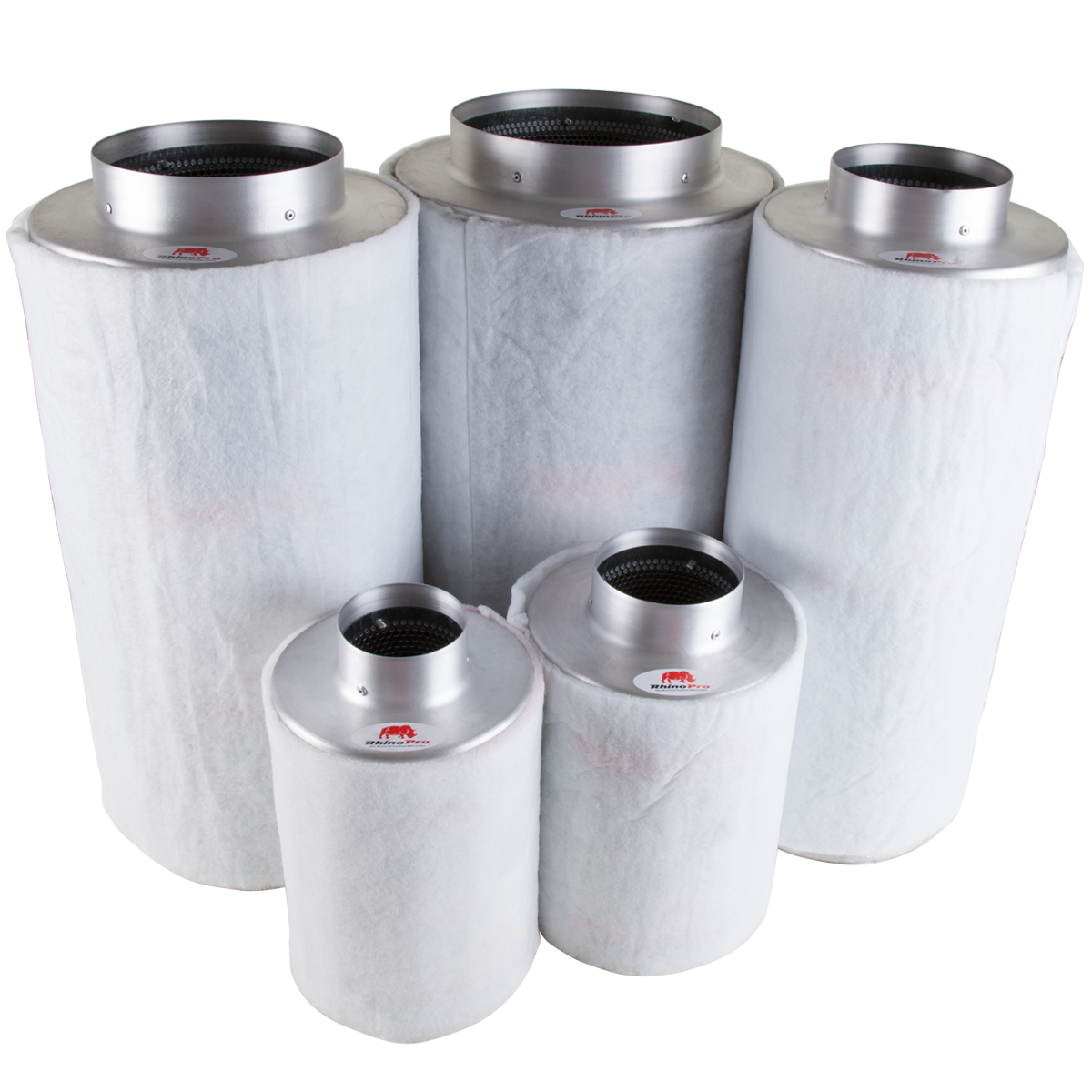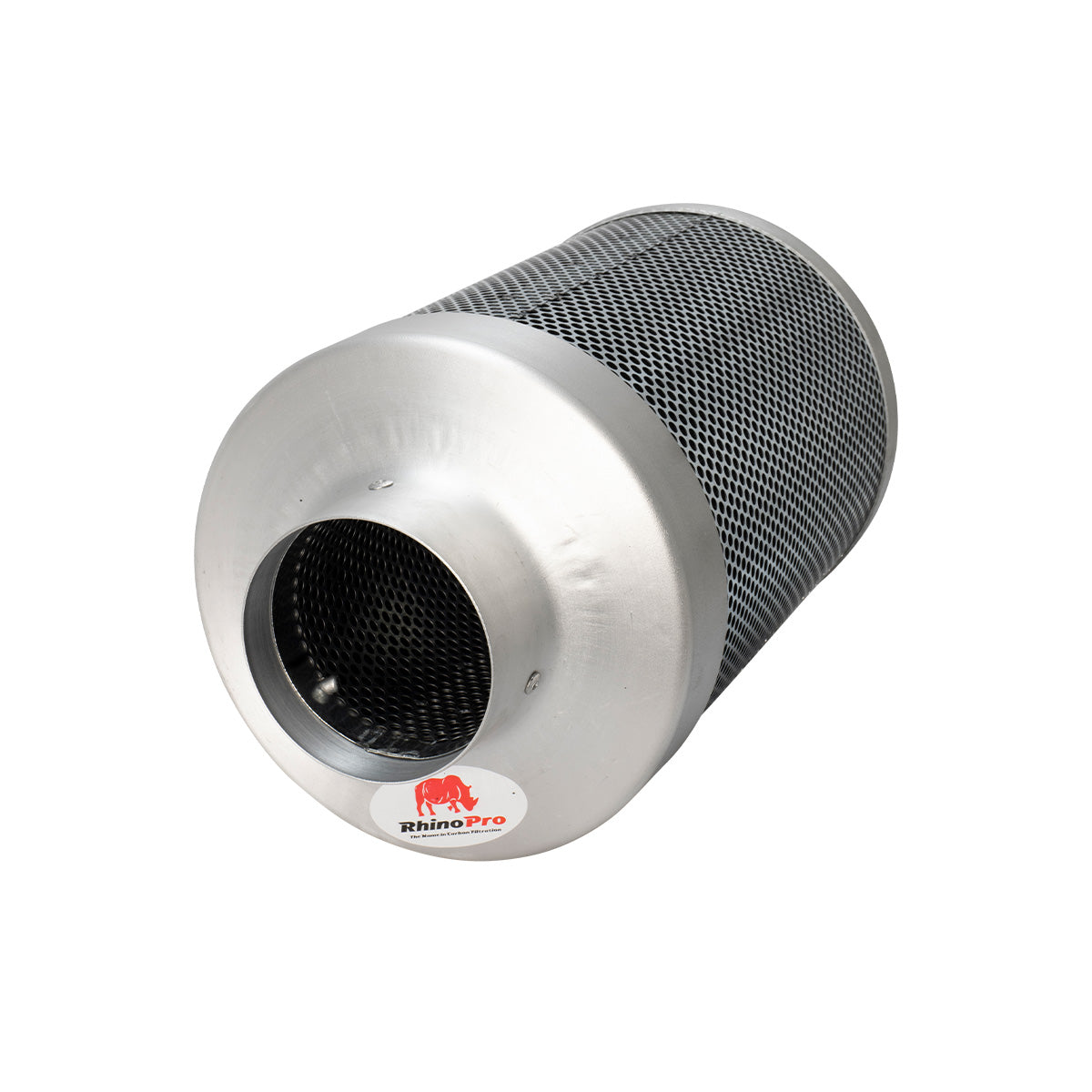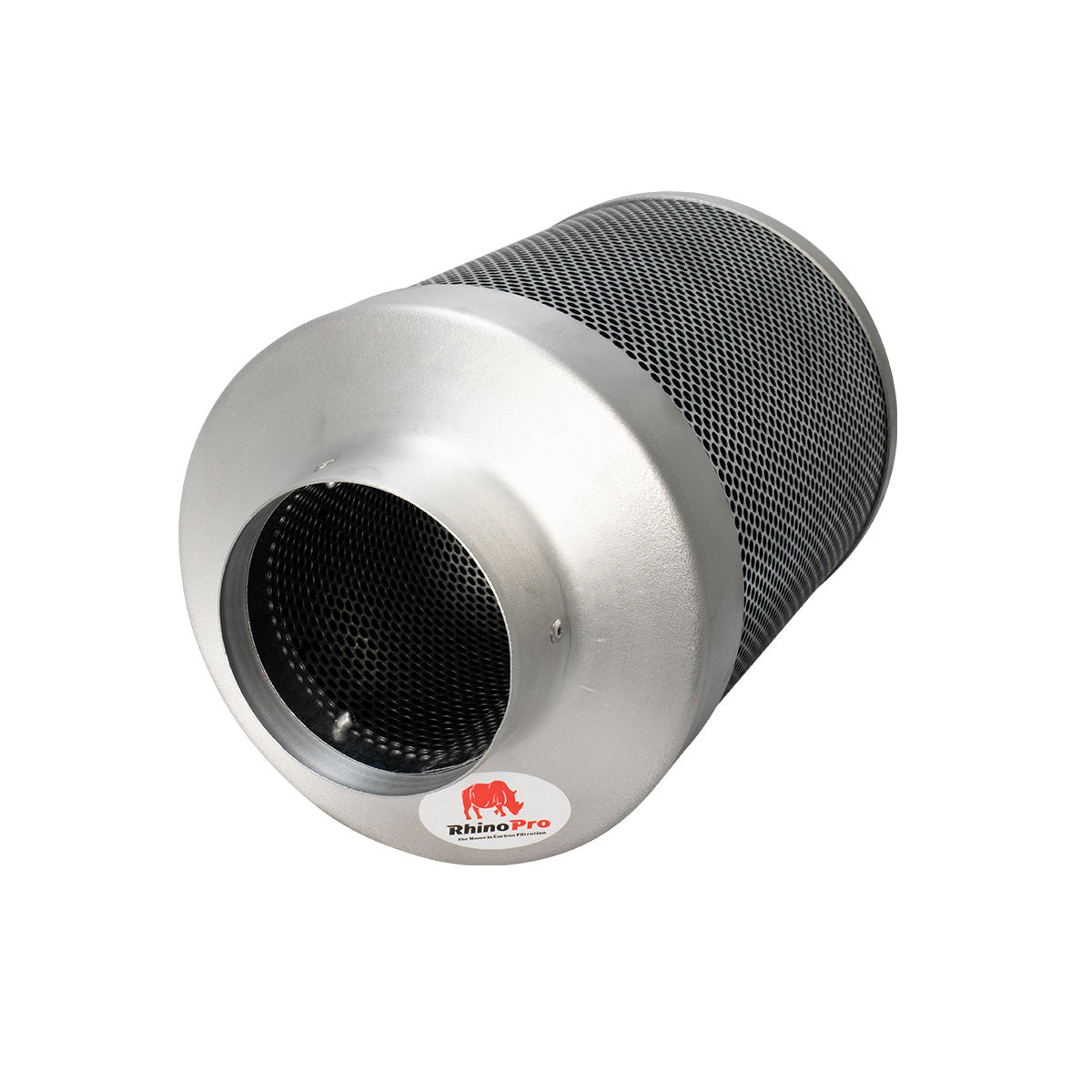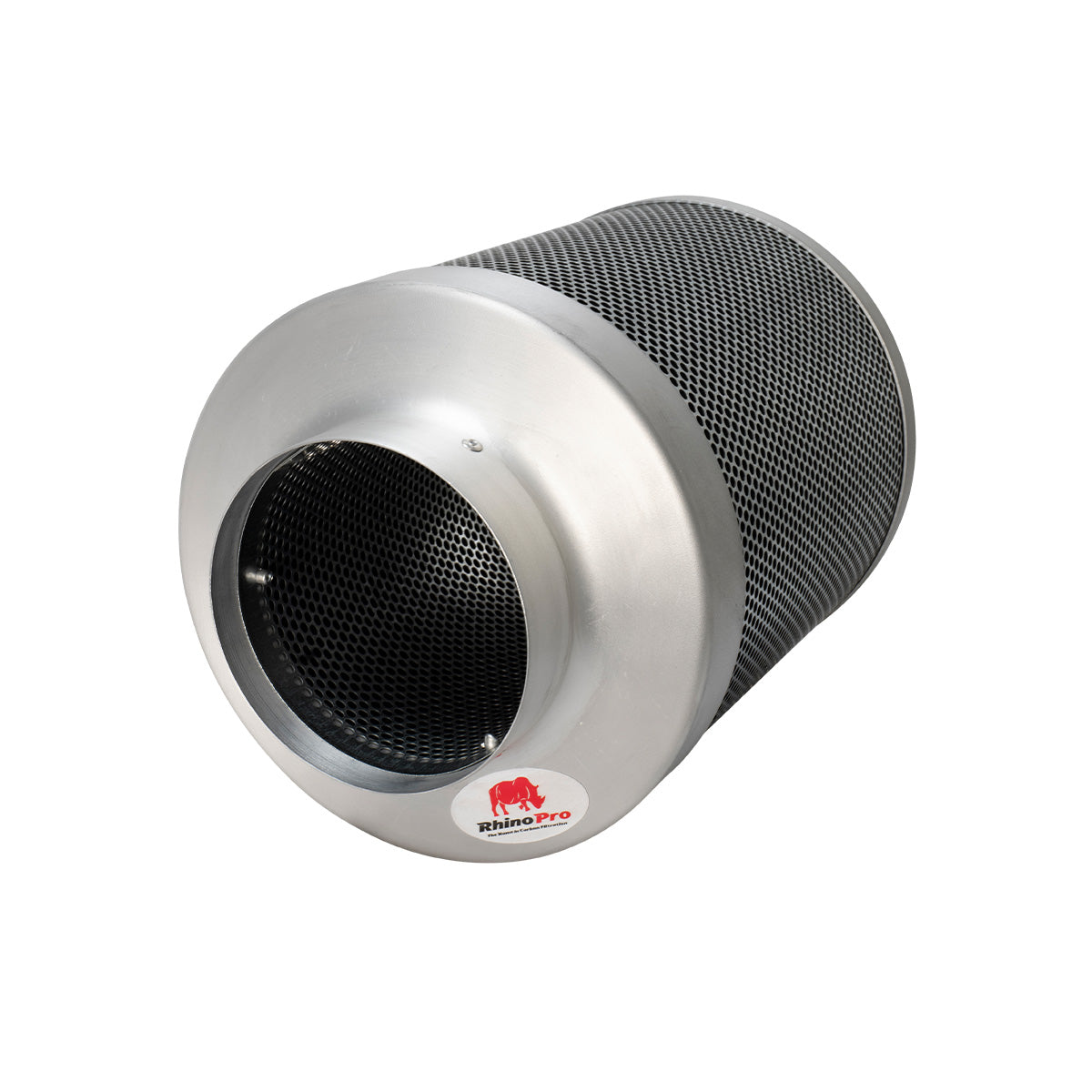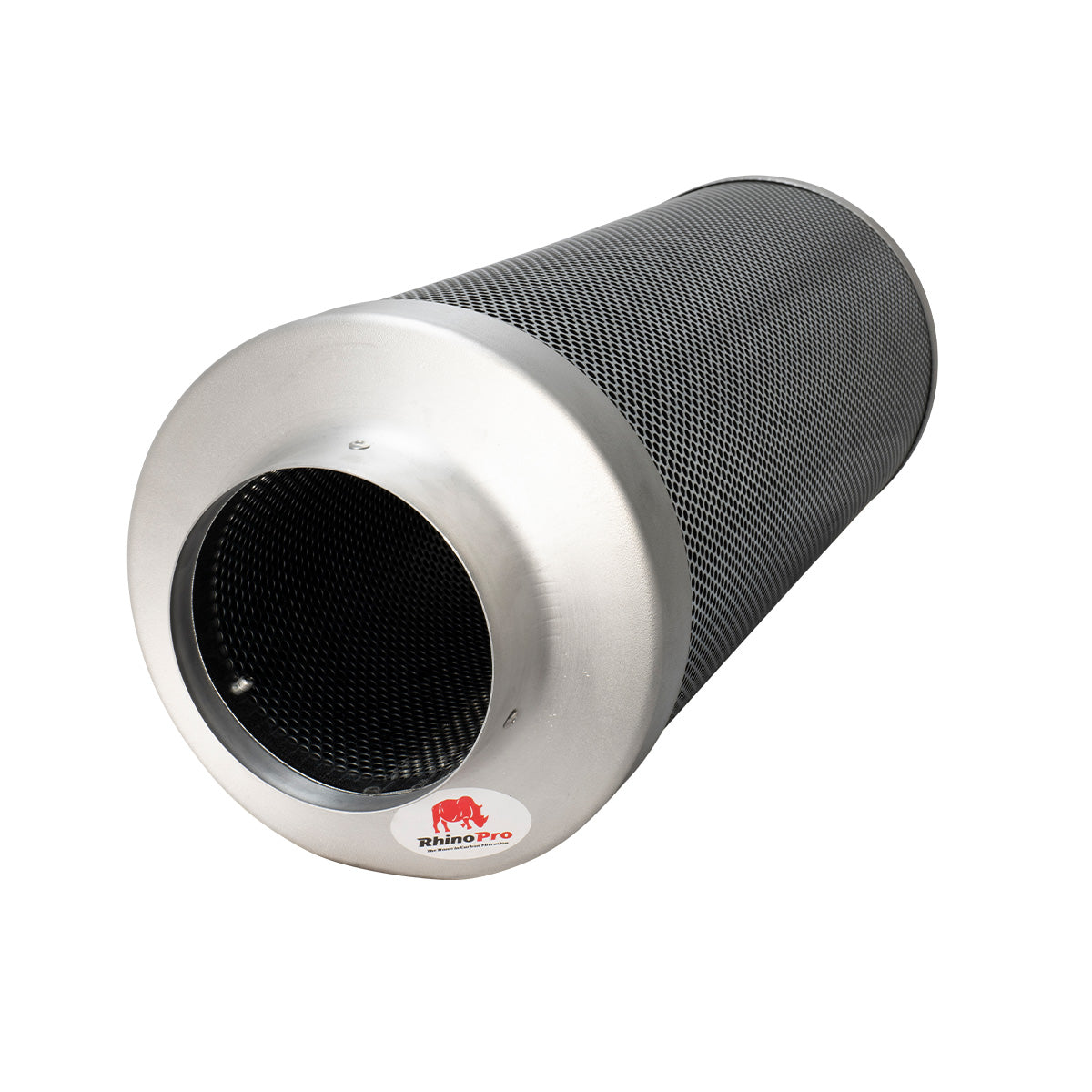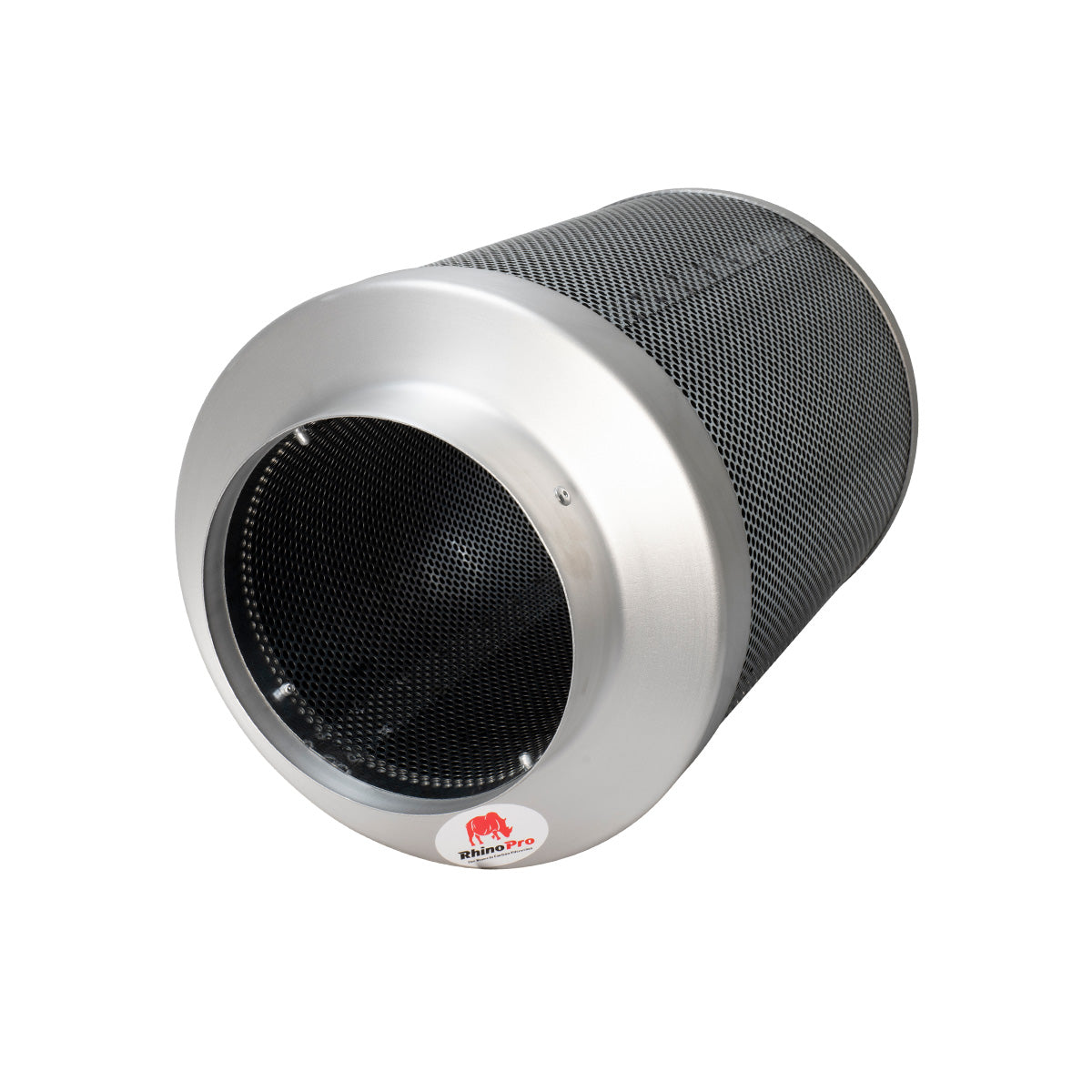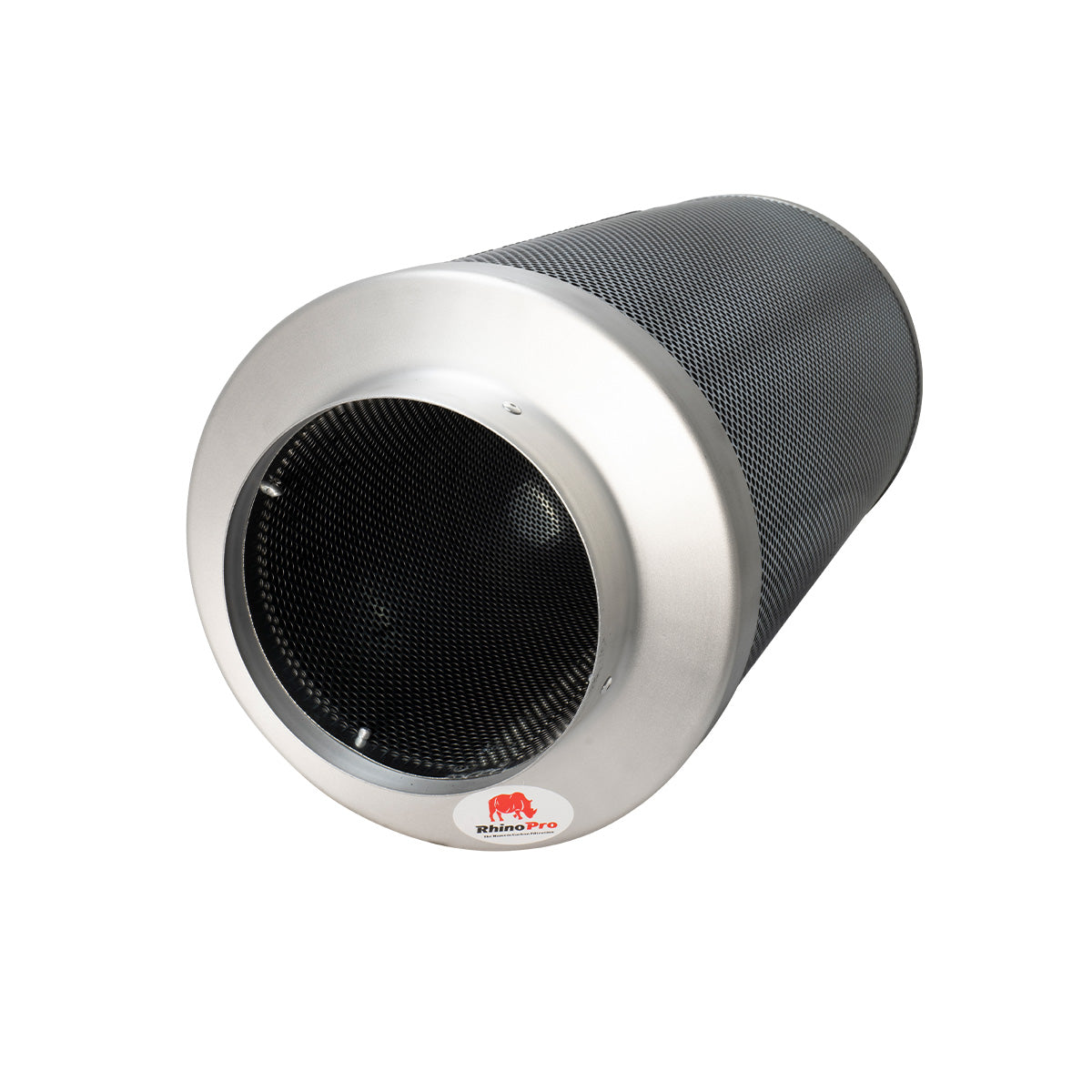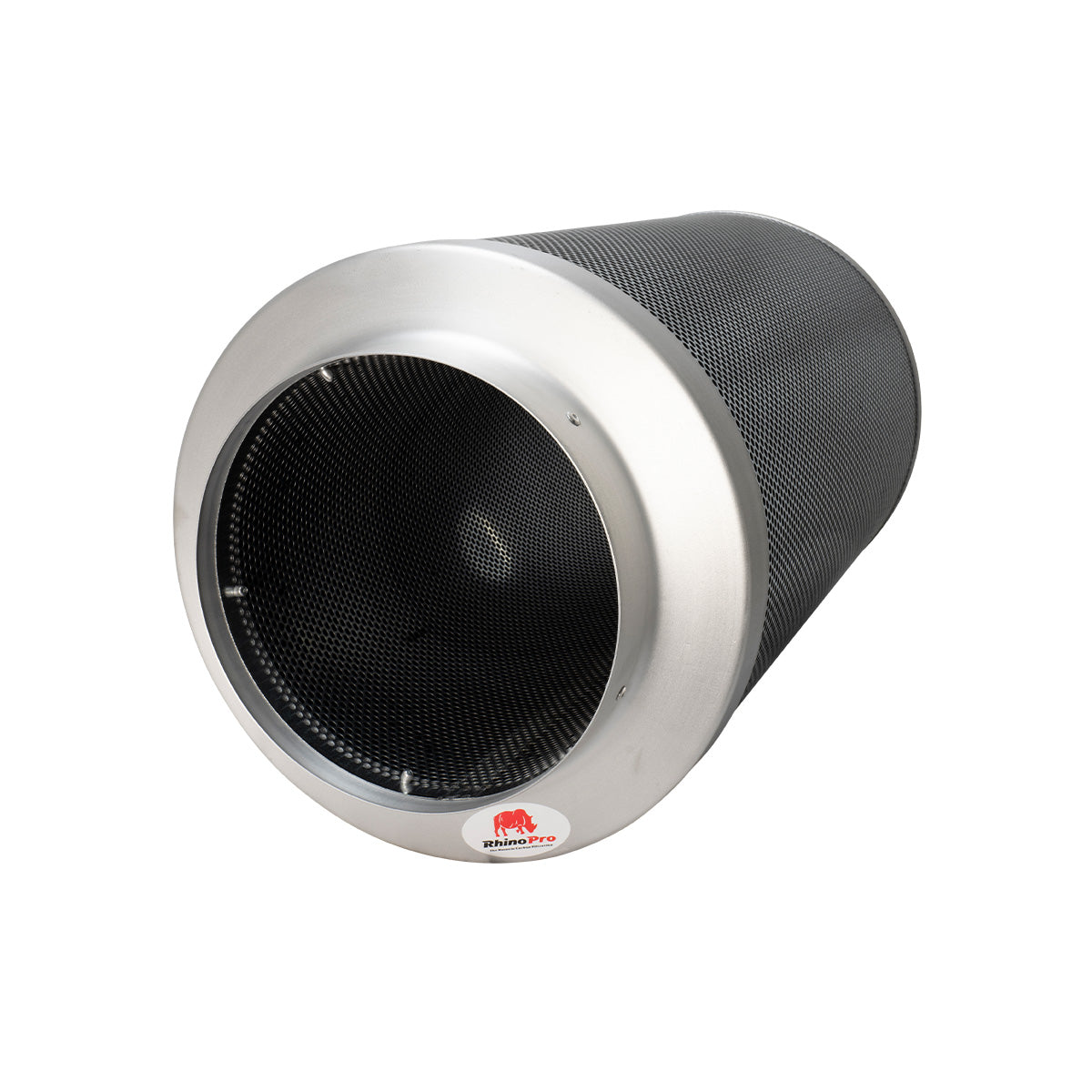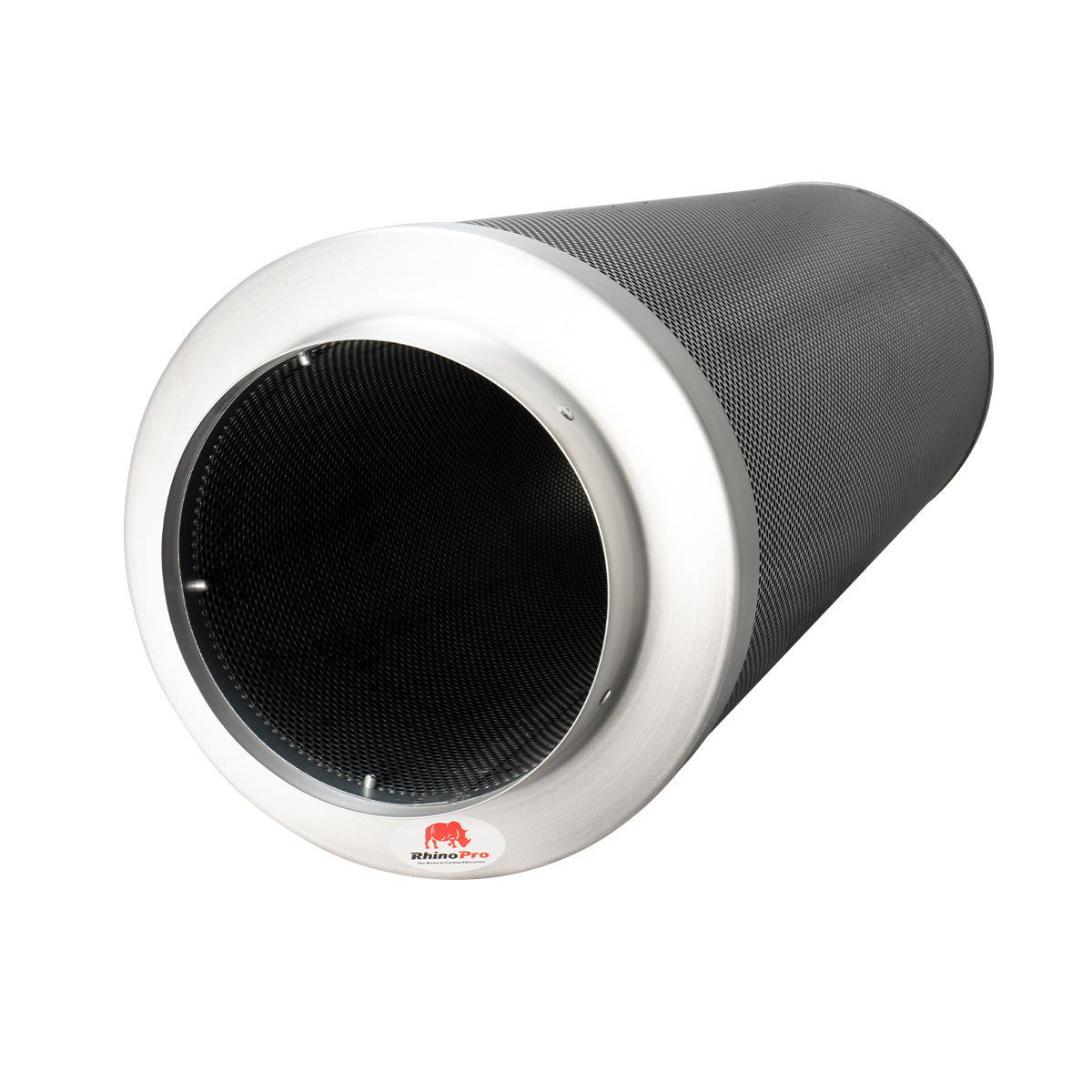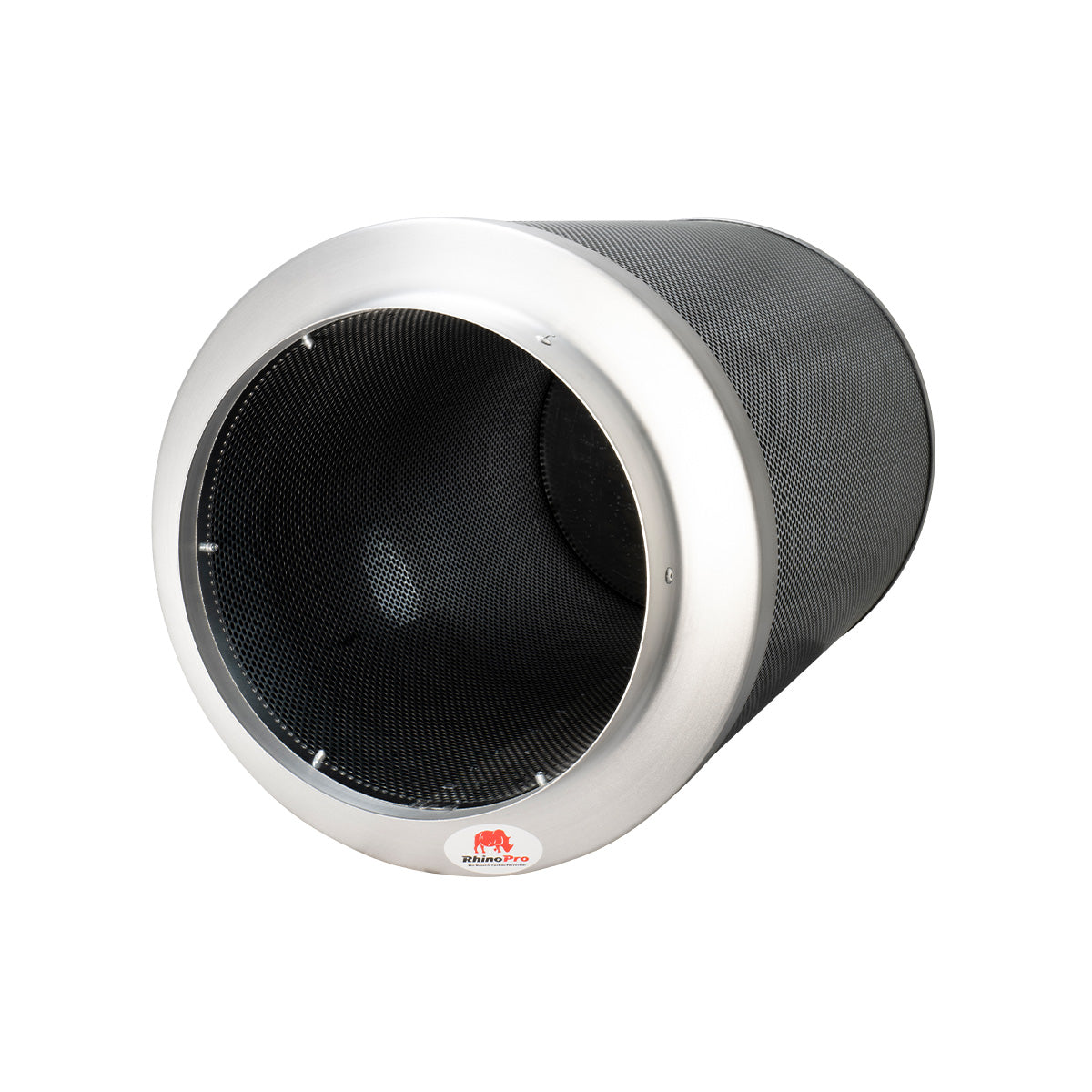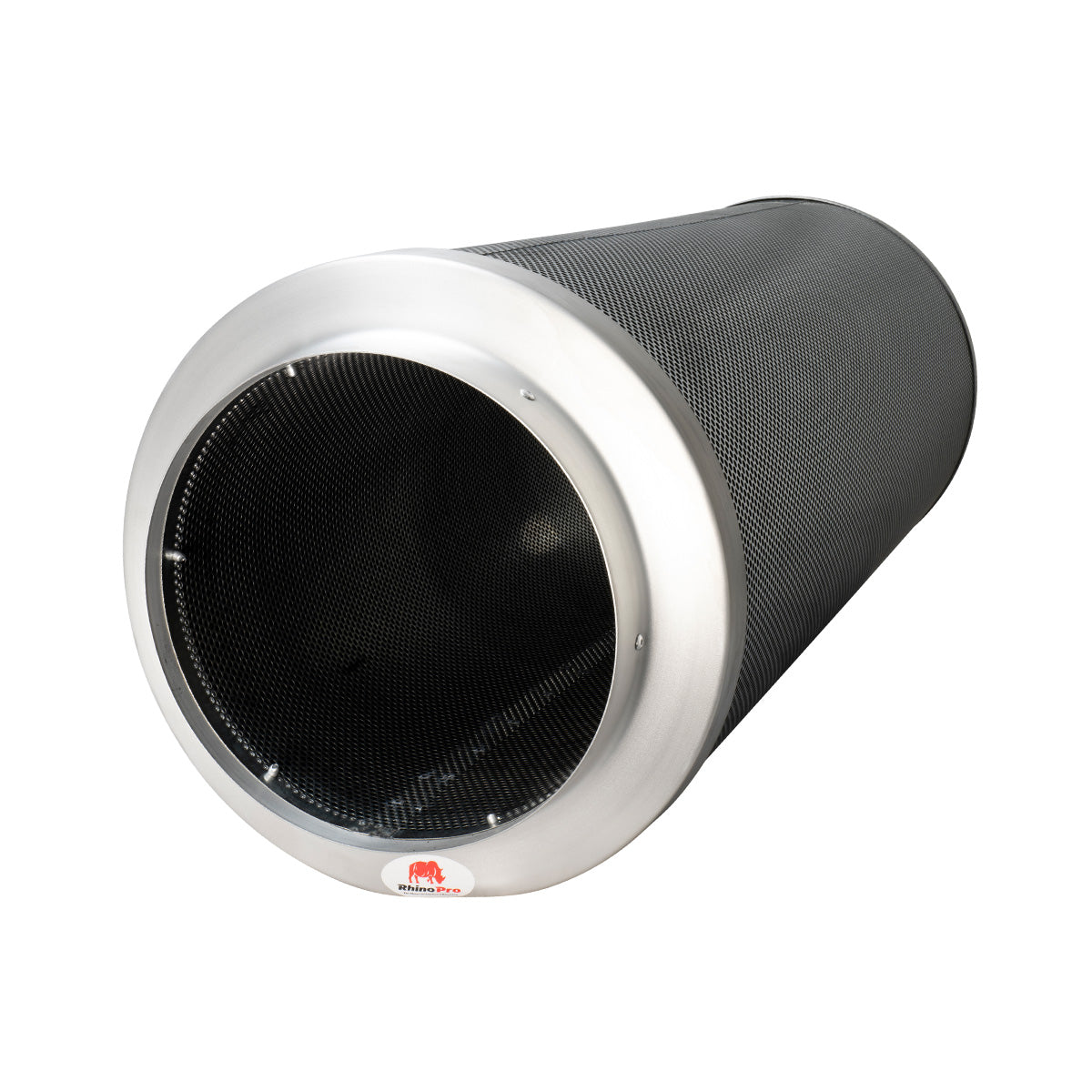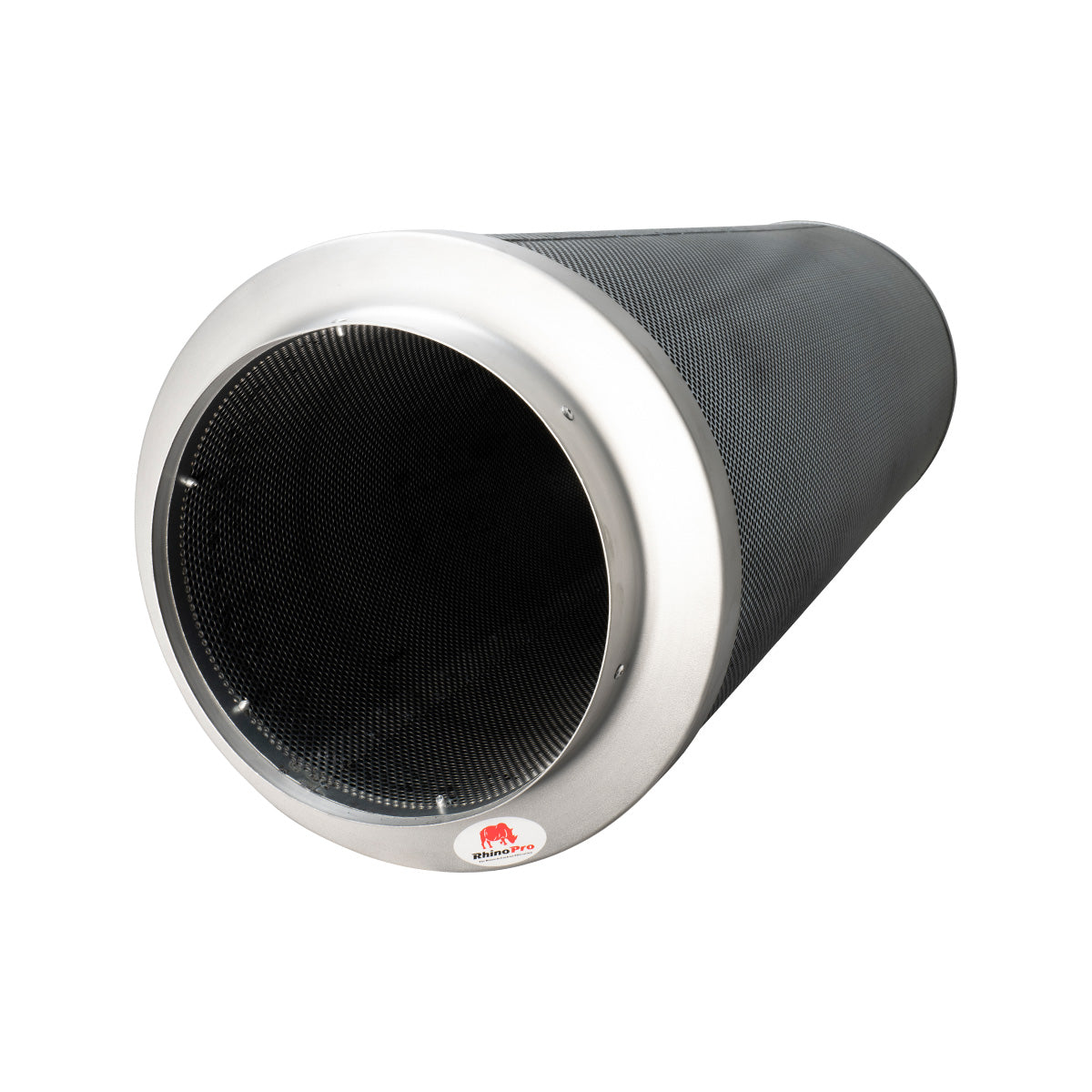The Carbon Filter Trusted By Growers For 20 Years
When it comes to smell control, Rhino Pro filters are in a league of their own. Built to deliver consistently clean, odour-free airflow, these high-performance carbon filters are trusted by growers worldwide. Packed with premium RC412 Australian virgin carbon and fitted with a unique anti-bypass design, they’re built to keep your grow discreet, and stay that way for longer.
Why Choose a Rhino Pro Filter?
- Premium RC412 virgin carbon – the industry’s cleanest, most porous grade
- Machine-packed 50mm carbon bed – maximum surface contact for odour control
- 51% open area mesh for increased airflow and performance
- Keeps you growing sweetly for roughly two years before needing to change
- Aluminium cone base – optimised for smooth airflow and reduced pressure drop
- Anti-bypass system – forces all air through the carbon for total filtration
- Lightweight aluminium shell – strong, rust-proof, and easy to hang with rope ratchets
- Pairs perfectly with the Mammoth TT Fan range
How It Works
Air is pulled through the pre-filter sleeve, catching dust and large particles before they reach the carbon. From there, it passes into a spiral-packed layer of activated carbon; each granule offering thousands of micro-pores that trap odour and impurities. Inside the filter, a coned vortex base helps even out pressure, improving flow rate and extending filter life.
Filter Sizes & Airflow Ratings
- 100mm x 300mm: 350 m³/h
- 125mm x 300mm: 500 m³/h
- 150mm x 300mm: 600 m³/h
- 150mm x 600mm: 600 m³/h
- 200mm x 400mm: 900 m³/h
- 200mm x 600mm: 1125 m³/h
- 250mm x 600mm: 1420 m³/h
- 250mm x 1000mm: 1900 m³/h
- 315mm x 600mm: 2440 m³/h
- 315mm x 1000mm: 3250 m³/h
- 315mm x 1200mm: 3600 m³/h
Who’s the Rhino Pro Filter For?
If you want professional-grade odour control that lasts longer than standard filters, Rhino Pro is the top choice. Ideal for growers who want zero compromise on airflow, smell reduction, and build quality — whether it’s your first tent or a full commercial setup.
How to Use the Rhino Pro Filter
Mount the filter at the top of your grow tent using straps or chains. Connect it to your extractor fan using ducting and jubilee clips, and make sure your fan is matched to the correct airflow range. Replace the pre-filter sleeve regularly and expect up to 24 months of high-performance use with proper care and correct humidity.
Need more help? Give us a call or read our blog here
Looking for the Best in Smell Control?
Rhino Pro filters set the standard for professional carbon filtration — giving you reliable, discreet performance from seed to harvest.
To see our full Rhino Carbon Filters range, click here
